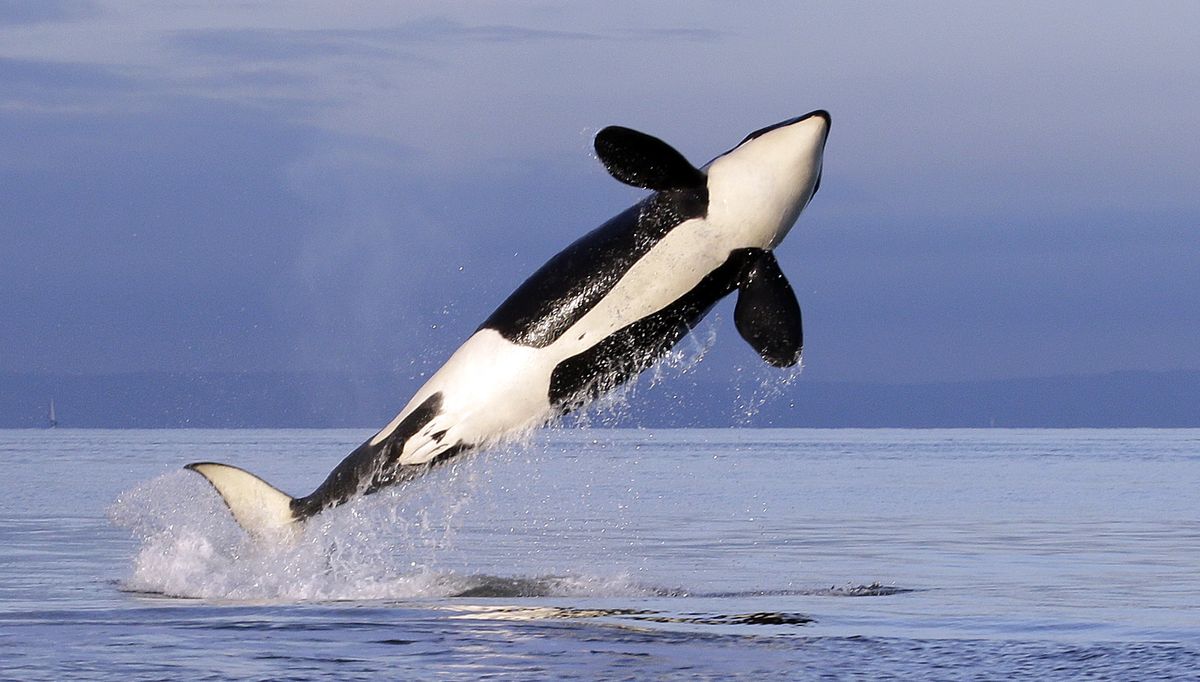Governors band together for salmon, orcas after federal plan falls flat

From staff and wire reports
The governors of Washington, Oregon, Idaho and Montana announced a regional collaboration on salmon recovery in the Columbia River Basin that includes strategies for the states to engage with tribal nations and federal agencies and address the concerns of communities that depend on the river.
The announcement comes after federal agencies released their final plan for the management of 14 federal dams in the Basin, including four on the lower Snake River. The U.S. Army Corps of Engineers, Bureau of Reclamation and Bonneville Power Administration concluded that their plan wouldn’t put salmon or orcas at risk, essentially maintaining the status quo.
The agencies’ decision contradicted leading independent scientists, who have concluded that without major changes, the dams’ continued operation threatens salmon and Southern Resident orcas with extinction.
“We appreciate the governors taking this crucial step to help salmon, orcas and communities impacted by the lower Snake River dams after federal agencies failed us yet again,” said Meg Townsend, an endangered species attorney at the Center for Biological Diversity.
“We hope the governors follow the clear scientific evidence and take the necessary, bold action required to restore the river. We have to bring back the vibrant salmon runs that are essential to our region, and especially for our beloved orcas, before it’s too late.”
The Orca Salmon Alliance, a group of 17 conservation organizations working to protect and preserve endangered salmon and the Southern Resident orcas, wrote to the governors urging this type of collaboration. The groups asked the governors to quickly develop and implement a plan to restore the lower Snake River ecosystem.
The Columbia Basin dams directly kill salmon as they migrate through slow-moving reservoirs and dam turbines downstream to the Pacific Ocean, where the fish spend their adult lives. On salmons’ return trip upstream, dams block access to 40% of spawning habitat. On the rivers that allow for salmon passage, the fish must survive increasingly hot river temperatures long enough to spawn before ending their life cycle.
Lower Snake River spring chinook are especially important for the Southern Resident orcas because of the timing of their migration and their high fat content. These salmon return at only a tiny fraction of their historic – or potential – numbers.
Salmon are the Southern Resident orcas’ primary food source. Years of low salmon abundance throughout the orcas’ range are driving this unique community to extinction. The total population stands at only 72 members and two newborn calves. Due to the numerous stresses and threats the Southern Resident orcas face, newborns in this population have only a 50% chance of surviving their first year of life.
“This collaboration is a tremendous, necessary step forward in working to save the salmon and orcas who rely on this important river system,” said Robb Krehbiel, Northwest representative at Defenders of Wildlife. “We are grateful to the governors, as there is more vital work to be done.
“The Orca Salmon Alliance looks forward to the governors and Northwest tribes leading our region into the future and securing a healthy river for the people and wildlife who depend on it.”